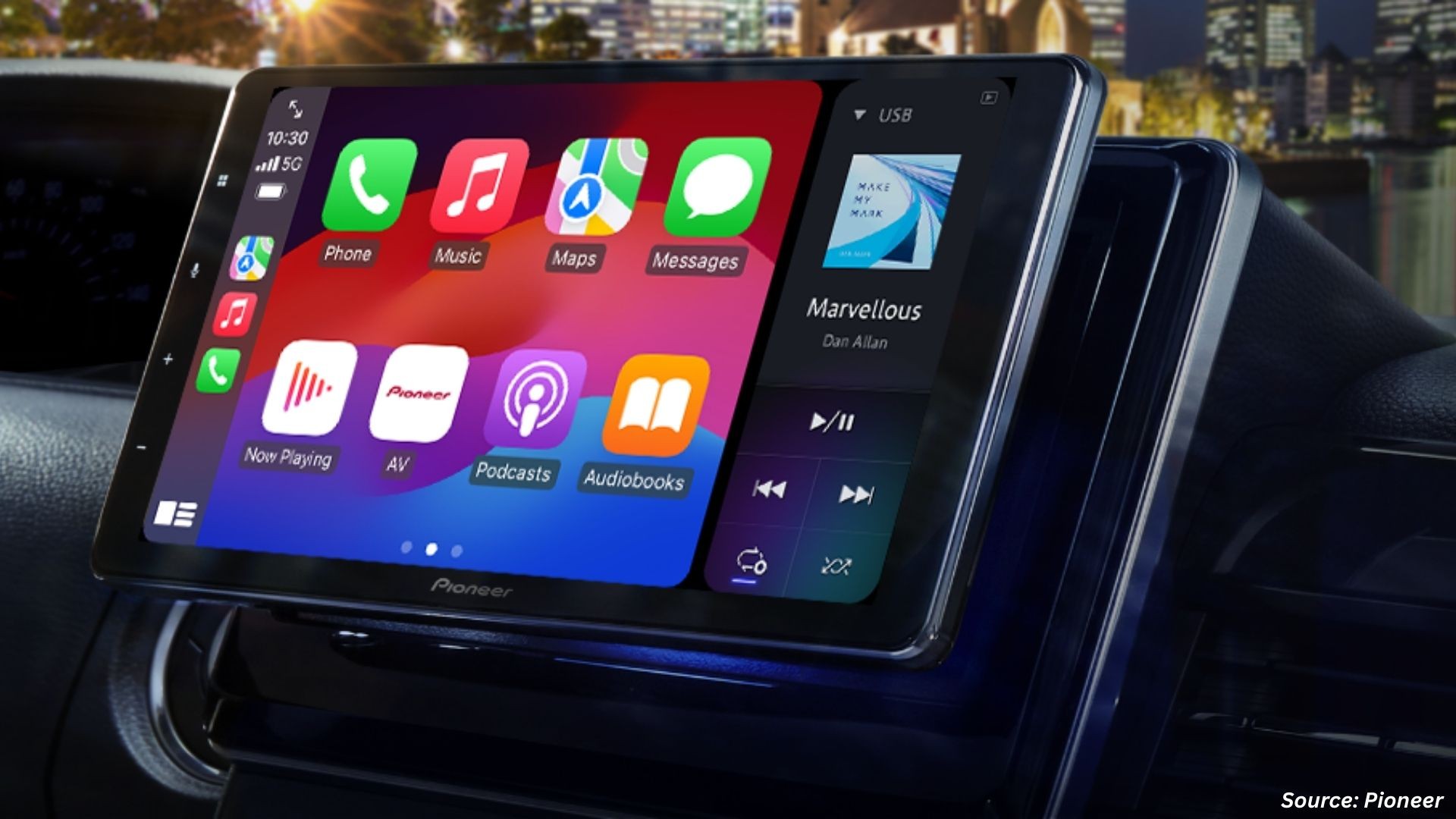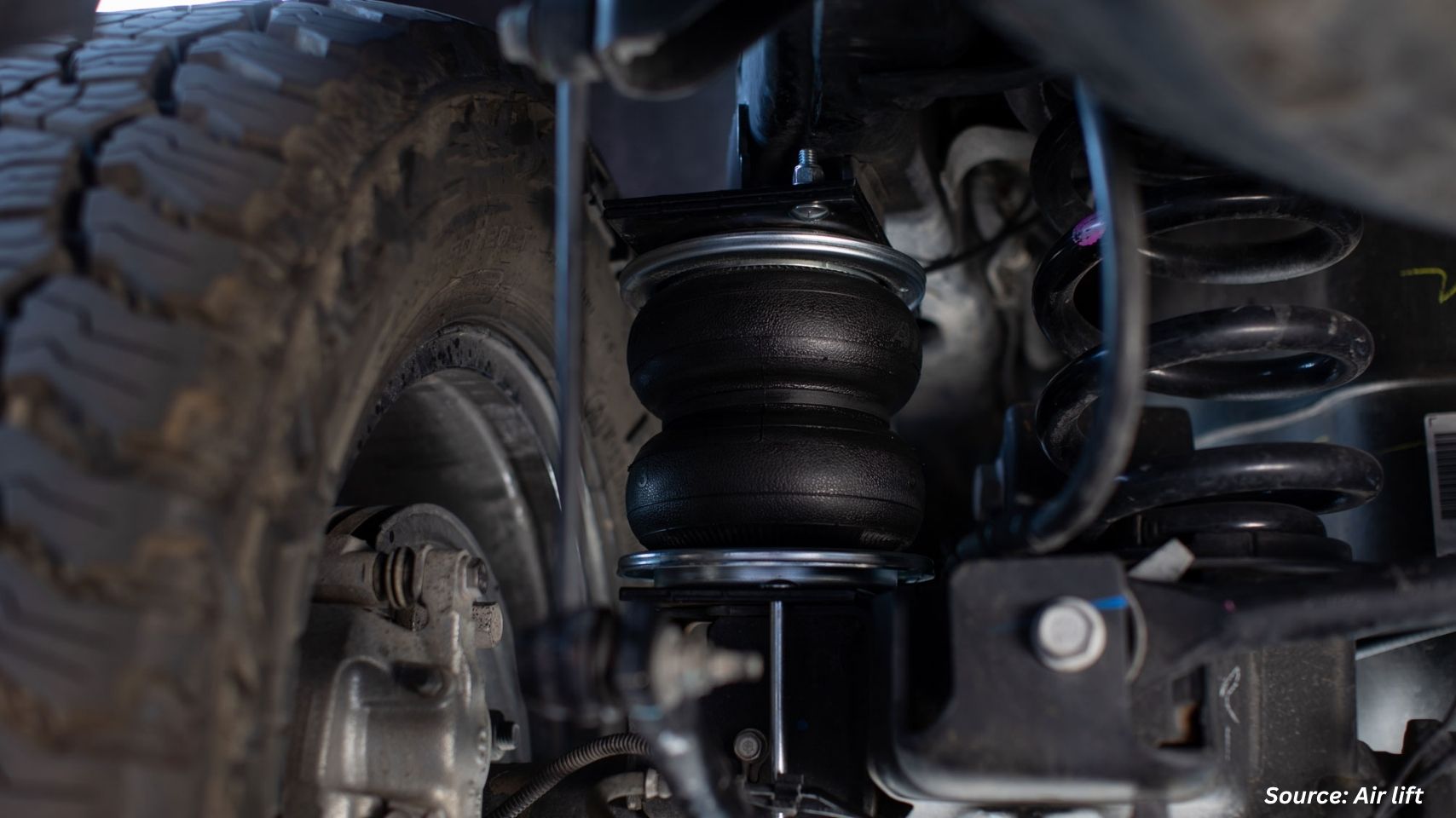
In-Car Audio System Market by Product Type (Head Units [Single-DIN vs Double-DIN, Touchscreen vs Non-Touchscreen, Smart vs Basic], Speaker Systems, Amplifiers, Subwoofers, Digital Signal Processors), by Technology (Standard Audio, Connected Infotainment, Premium Surround Sound, AI-Powered Audio), by Installation Type, by Vehicle Type, by Price Segment, by Sales Channel, and End User – Global Opportunity Analysis and Industry Forecast, 2025–2030.
Industry Overview
The global In-Car Audio System Market size was valued at USD 14.69 billion in 2024 and is estimated to reach USD 16.20 billion in 2025 and is predicted to reach USD 26.41 billion by 2030 with a CAGR of 11.40% from 2025 to 2030. The market is growing as vehicles increasingly serve as personalized entertainment spaces.
Consumers now seek rich sound quality, powerful bass, and immersive acoustics, with demand particularly strong among electric and luxury vehicle owners. Quiet cabin environments in these vehicles enhance the listening experience, boosting the appeal of premium, noise-cancelling, multi-channel systems.
Automaker collaborations with music streaming platforms are expanding access to high-quality content and improving user engagement. While high costs restrict adoption in budget-sensitive markets, emerging technologies such as AI-driven personalization, adaptive sound zones, and advanced voice controls are set to transform in-car audio into a core feature and new revenue opportunity for manufacturers, driving the in-car audio system market demand.
Consumer Demand for Enhanced Driving Experience Boosts Market Growth
Modern consumers are redefining their expectations of in-car environments, treating vehicles not just as transportation, but as personal entertainment zones. This shift has significantly boosted the demand for high-performance in-car audio systems.
Features such asRising Sales of EVs and Luxury Vehicles Drive Demand for Premium In Car Audio clear sound output, deep bass, and immersive surround acoustics have become essential, especially among daily commuters and long-distance travelers. As entertainment and comfort continue to shape purchasing decisions, premium audio systems are increasingly seen as a standard, not a luxury, thereby accelerating the in-car audio system market growth.
Rising Sales of EVs and Luxury Vehicles Drive Demand for Premium In Car Audio
The rapid adoption of electric vehicles and the concurrent rise in the luxury vehicle segment are key drivers in reshaping consumer expectations for in car audio systems. These vehicles emphasize cabin refinement, acoustic comfort, and an immersive experience, elevating audio from a luxury to a core feature.
According to the International Energy Agency (IEA), global electric car sales topped 17 million in 2024, marking an increase of more than 25% year-on-year. Remarkably, the additional 3.5 million EVs sold in 2024 alone exceed the total EV sales worldwide in all of 2020.
Many EV buyers increasingly appreciate high-fidelity, noise-cancelling, multi-channel audio systems, particularly because EVs’ quiet operation brings cabin acoustics into sharper focus. Automakers and EV manufacturers are partnering with premium audio brands to deliver bespoke, immersive sound experiences.
Collaboration with Streaming Services and Content Platforms Increase Market Growth
Strategic collaborations between automakers and leading streaming platforms including Spotify, Tidal, Amazon Music HD, and Apple Music are significantly enhancing the in-car audio landscape. These partnerships are driving the native integration of high-resolution audio, mood-based curated playlists, and exclusive content like car-only podcasts or artist sessions, turning vehicles into personalized entertainment hubs.
A notable example is Tesla’s 2024.26.3 software update, rolled out in July 2024, which added native support for YouTube Music and Amazon Music. This expanded Tesla’s in-car streaming portfolio to nine major platforms, including Spotify, Tidal, Apple Music, and TuneIn, offering users a wide variety of content options.
The update ensures a consistent and intuitive audio interface, allowing seamless switching between services while maintaining high-quality playback. While both YouTube Music and Amazon Music are accessible via Wi-Fi or mobile hotspot, streaming over LTE requires Tesla’s Premium Connectivity subscription. This growing ecosystem of content partnerships not only elevates audio quality and user engagement, but also reinforces the role of premium in-car audio systems as a key differentiator in today’s connected vehicles.
High Cost of Premium Audio Systems Limits Mass Adoption
High upfront costs continue to be a major challenge, particularly in emerging and price-sensitive markets. Advanced in-car audio systems equipped with features such as surround sound, active noise cancellation, and smart connectivity significantly add to the overall vehicle cost. As a result, automakers are hesitant to offer these systems in entry-level or budget vehicles.
Additionally, aftermarket upgrades involve high installation costs, technical complexity, and potential risks to vehicle warranties, making them less appealing to cost-conscious consumers. Collectively, these issues hinder the widespread adoption of premium audio systems among lower-income buyers.
Integration of AI in Car Audio System Create Future Opportunity
Artificial Intelligence (AI) is poised to revolutionize the in-car audio market by enabling hyper-personalized and adaptive sound experiences. Future audio systems, powered by AI, will be capable of learning user preferences over time automatically adjusting volume, equalizer settings, playback speed, and even content type based on driving conditions, time of day, passenger profiles, or mood.
Advanced AI algorithms can also create dynamic audio zones, offering individualized soundscapes for each occupant ensuring the driver hears navigation clearly while passengers enjoy music or podcasts without interference. Moreover, voice recognition and natural language processing will make interaction with audio systems more intuitive, eliminating the need for manual inputs and enhancing safety.
As automakers invest in AI-driven infotainment systems, this level of personalization represents a compelling opportunity to differentiate vehicle models, increase customer satisfaction, and potentially unlock new subscription-based services tied to audio personalization and content curation.
Market Segmentations and Scope of the Study
The in-car audio system market report is segmented by product type, technology, installation type, vehicle type, price segment, sales channel, end users and regions. By product type, the market includes head units, speaker systems, amplifiers, subwoofers, and digital signal processors. By technology, it is classified into standard audio systems, connected infotainment, premium surround sound, and AI-powered audio. Installation types include OEM and aftermarket. By vehicle type, the market is segmented into passenger vehicles and commercial vehicles. Price segments cover economy, mid-range, premium, and luxury. Sales channels include OEM supply chain and aftermarket retail. Regional analysis spans North America, Europe, Asia-Pacific, and the Rest of the World.
Geographical Analysis
North America dominates the in-car audio system market share and is projected to maintain its dominance throughout the forecast period due to the growing automotive sector in the region. The rising demand for superior sound experiences by consumers during travel led automakers to introduce advanced audio systems in their vehicles.
The International Energy Agency states that the U.S. sold 14.63 million cars in 2023 as compared with 13.38 million cars in 2020 that represents a growth of 9.0% from 2020. Thus, with increasing car sales, the automakers compete to differentiate their models with superior audio technology that in turn propels the growth of the market.
Additionally, the expansion of infotainment systems drives demand for in-car audio systems, as consumers increasingly seek immersive quality audio experiences to match the advanced features of their vehicle’s infotainment setup such as navigation, streaming services, and voice control.
For instance, in January 2023, Panasonic Automotive Systems of America updated its SkipGen in vehicle infotainment system to allow simultaneous access to Siri and Alexa using simple wake words. This innovation enhances the driving experience by enabling hands-free control of calls, music, and navigation. This alignment between infotainment enhancements and audio quality requirements fuels the growth of the market.
In Europe, the growing popularity of premium vehicles and electric cars is significantly boosting demand for advanced in-car audio systems. Countries like Germany, France, Sweden, and the Netherlands are witnessing rapid adoption of EVs and high-end models, where cabin comfort and infotainment quality are key differentiators. Additionally, EU policies promoting vehicle electrification and connected mobility are accelerating the integration of smart infotainment systems, further driving growth in the in-car audio market across the region.
On the other hand, the Asia-Pacific region is growing attributed to the rising adoption of EVs in the region drives the demand for enhanced in-cabin experiences that creates an ideal environment for enriched sound experience, motivating manufacturers to prioritize innovative audio systems. The International Energy Agency states that China sold 10.1 million in 2024 as compared 6.0 million in 2022, representing a 68.34% from 2022. The growing EVs results in high demand for incorporation of advanced audio features to fulfill the modern need of the customers in the region.
In the Rest of the World (RoW), particularly in regions like Latin America, the Middle East, and parts of Africa and Southeast Asia, the rising middle-class population and increasing vehicle ownership are fueling the demand for feature-rich, mid-range vehicles equipped with quality in-car audio systems.
As local automotive markets mature, OEMs are focusing on localization strategies, offering region-specific infotainment features, voice support in local languages, and cost-effective branded audio solutions. For example, car buyers in countries like Brazil, South Africa, and Indonesia are showing growing interest in Bluetooth-enabled, smartphone-integrated systems that support Android Auto and Apple CarPlay, even in entry-level models.
Strategic Innovations Adopted by Key Players
Key players in the in-car audio system industry are advancing growth through AI-enhanced audio technologies, premium OEM partnerships, and energy-efficient innovations.
-
In May 2024, Sony Group Corporation launched two new car speakers XS-162GS and XS-160GS with advanced audio technology including a composite polypropylene cone for deep bass and a silk soft dome tweeter for clear sound. It further includes a dynamic air diffuser for efficient airflow and easy installation features.
-
In March 2024, Pioneer Corporation unveiled a new Premium Sound System that will be factory-installed in the upcoming Lexus GX SUVs launching in Japan. This partnership marks a strategic move to elevate in vehicle audio, enhancing the cabin listening experience through tailored, high-quality sound systems.
-
In January 2024, Harman International launched the new Infinity Reference series of shallow-mount subwoofers and enclosures. Designed for powerful in-car bass performance, these 10” and 12” subwoofers feature aluminum woofer cones, high-roll surrounds, and Selectable Smart Impedance (SSI) technology, enhancing both efficiency and sound quality for a superior in-vehicle audio experience.
-
In November 2023, Panasonic Holdings Corporation collaborated with Fisker Inc. to launch the fisker pulse premium audio system for all-electric fisker ocean SUV. This advanced audio system features 15 high-performance speakers that aims to deliver studio-quality sound while consuming 60% less energy than traditional systems.
-
In June 2023, Bang & Olufsen collaborated with Acura to deliver premium audio systems in all future models. This collaboration aims to enhance the in-vehicle audio experience and thereby, utilizing Bang & Olufsen's expertise to create immersive sound systems.
Key Benefits
-
The report provides quantitative analysis and estimations of the market from 2025 to 2030, which assists in identifying the prevailing industry opportunities.
-
The study comprises a deep dive analysis of the current and future in-car audio system market trends to depict prevalent investment pockets in the sector.
-
Information related to key drivers, restraints, and opportunities and their impact on the market is provided in the report.
-
Competitive analysis of the players, along with their market share is provided in the report.
-
SWOT analysis and Porters Five Forces model is elaborated in the study.
-
Value chain analysis in the market study provides a clear picture of roles of stakeholders.
In-Car Audio System Market Key Segments
By Product Type
-
Head Units
-
Single-DIN vs Double-DIN
-
Touchscreen vs non-touchscreen
-
Smart vs Basic
-
-
Speaker Systems
-
Coaxial
-
Component
-
Centre Channel Speakers
-
-
Amplifiers
-
Mono
-
Multi-Channel
-
OEM Integration Amplifiers
-
-
Subwoofers
-
Enclosed
-
Component
-
-
Digital Signal Processors
-
Standalone DSPs
-
Amplifier-DSP Combos
-
OEM Integration Processors
-
By Technology
-
Standard Audio Systems
-
Basic Analog
-
Entry-Level Digital
-
-
Connected Infotainment
-
4G/5G Connectivity
-
Wi-Fi / Bluetooth
-
Over-the-Air Updates
-
-
Premium Surround Sound
-
Dolby Atmos
-
3D Audio
-
Branded Audio
-
-
AI-Powered Audio
-
Adaptive Sound Tuning
-
Noise Cancellation
-
Voice-Controlled Interfaces
-
By Installation Type
-
OEM
-
Luxury Brand Collaborations
-
Mass-Market OEMs
-
-
Aftermarket
-
Retail Kits
-
Custom-Installed Solutions
-
By Vehicle Type
-
Passenger Vehicles
-
Commercial Vehicles
By Price Segment
-
Economy
-
Mid-Range
-
Premium
-
Luxury
By Sales Channel
-
OEM Supply Chain
-
Direct to Automakers
-
Dealer-Fitted Upgrades
-
-
Aftermarket Retail
-
Online
-
Offline
-
By End User
-
Automakers
-
Luxury Brands
-
Mass-Market Brands
-
-
Consumers
-
DIY Installers
-
Professional Installation Buyers
-
By Region
-
North America
-
The U.S.
-
Canada
-
Mexico
-
-
Europe
-
The UK
-
Germany
-
France
-
Italy
-
Spain
-
Denmark
-
Netherlands
-
Finland
-
Sweden
-
Norway
-
Russia
-
Rest of Europe
-
-
Asia-Pacific
-
China
-
Japan
-
India
-
South Korea
-
Australia
-
Indonesia
-
Singapore
-
Taiwan
-
Thailand
-
Rest of Asia Pacific
-
-
RoW
-
Latin America
-
Middle East
-
Africa
-
Key Players
-
Harman International Industries Inc.
-
Bose Corporation
-
Sony Group Corporation
-
Pioneer Corporation
-
Alpine Electronics, Inc.
-
JVCKENWOOD Corporation
-
Sennheiser
-
Bowers & Wilkins (Automotive)
-
Burmester Audiosysteme GmbH
-
Focal JMLab (Focal)
-
Meridian Audio Ltd
-
Naim Audio Ltd
-
Audison (Elettromedia S.p.A.)
REPORT SCOPE AND SEGMENTATION
|
Parameters |
Details |
|
Market Size in 2024 |
USD 16.20 Billion |
|
Revenue Forecast in 2030 |
USD 26.41 Billion |
|
Growth Rate |
CAGR of 11.40% from 2025 to 2030 |
|
Analysis Period |
2024–2030 |
|
Base Year Considered |
2024 |
|
Forecast Period |
2025–2030 |
|
Market Size Estimation |
Billion (USD) |
|
Growth Factors |
|
|
Countries Covered |
28 |
|
Companies Profiled |
10 |
|
Market Share |
Available for 10 companies |
|
Customization Scope |
Free customization (equivalent up to 80 working hours of analysts) after purchase. Addition or alteration to country, regional, and segment scope. |
|
Pricing and Purchase Options |
Avail customized purchase options to meet your exact research needs. |

















 Speak to Our Analyst
Speak to Our Analyst

























